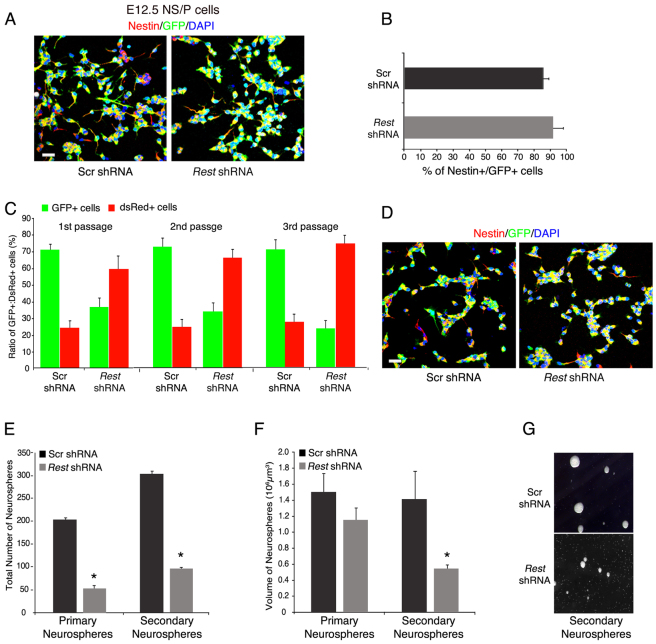Fig. 4.
E12.5 N/SP cells that lack REST have reduced capacity to proliferate or generate neurospheres. (A) Immunostaining of E12.5 NS/P cells expressing Rest shRNA indicating that they remained largely nestin positive. GFP represents transduced cells. Scrambled (Scr) shRNA served as a control. (B) Bar graph indicating no significant differences in the number of nestin-positive NS/P cells, whether expressing scrambled or Rest shRNA. (C) NS/P cells lacking REST show reduced proliferation rate in a competition-based assay. Bar graph shows that mixed NS/P cells initially cultured at a ratio of 3:1 GFP/Rest shRNA-expressing NS/P cells:dsRed-expressing NS/P cells, respectively, ended up at a 1:3 ratio after three passages. (D) Immunostaining after the third passage indicates that GFP+ cells, expressing Rest shRNA, remained largely Nestin-positive NS/P cells. (E,F) The number (E) and volume (F) of neurospheres generated from NS/P lacking REST (Rest shRNA) are significantly reduced. *P<0.05. (G) Representative images showing that secondary neurospheres generated from Rest shRNA-expressing NS/P cells are smaller than scrambled shRNA-expressing NS/P cells. Scale bars: 50 μm. All error bars are mean ± s.e.m. based on three independent experiments.

